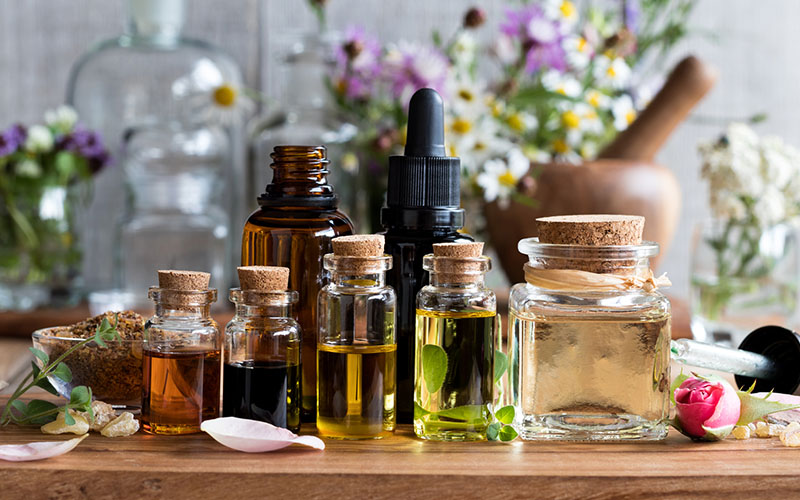This is an update to a post originally published in 2015.
Currently, when creating your ingredient declaration, you have the option to use the term “fragrance” to cover any ingredients that are used to scent your product or “flavor” to cover any ingredients that flavor your product.
That’s very handy if you are purchasing a fragrance or flavor product and don’t know what’s in it. How can that happen? Fragrance and flavor manufacturers are not required to tell you!
That said, there has been growing concern amongst consumers, watchdog groups, and legislators that there are harmful ingredients in fragrances and flavors that should be disclosed.
Let’s take a look at the current regulations, your options, and what might be coming.
Current Regulations
The current regulations have to do with the ingredient declaration and the requirement to disclose fragrance allergens.
Ingredient Declaration
The regulations for cosmetics require that you provide an ingredient declaration on the label. It must include all of the ingredients listed in descending order of predominance (with some minor exceptions).
If you look at a food label, sometimes you’ll see the ingredients of an ingredient listed in parentheses. That format does not apply to a cosmetic product. On cosmetic labels, the individual components of a blended ingredient must be listed and placed on the list based on their percentage in the whole. For example, if you add a preservative that is a blend of several components, EACH of the components must be listed separately on the list.
That is, except for fragrance and flavor. Regardless of whether there are component ingredients, those can be listed by the single, generalized name. Fragrance or Flavor.
Directly from the regulations:
The label on each package of a cosmetic shall bear a declaration of the name of each ingredient in descending order of predominance, except that fragrance or flavor may be listed as fragrance or flavor. … No ingredient may be designated as fragrance or flavor unless it is within the meaning of such term as commonly understood by consumers. [emphasis added]
21 CFR 701.3(a)
Apparently, the fragrance (and flavor) industry had some considerable sway when the regulations were being created. Unlike other blended ingredients, they don’t need to disclose the components of their fragrances.
Fragrance Allergens
In the US, the first move toward disclosure of harmful components of fragrances was in MoCRA, which was passed in December 2022. It required disclosure of fragrance allergens in cosmetics. However, we do not yet have the list of fragrance allergens nor any regulations or guidance on how they must be presented.
Meantime, other countries do require disclosure of fragrance allergens.
Ingredient Declaration Options
Depending on whether you buy your fragrance or blend it yourself from essential oils, you have options on how to present the data in your ingredient declaration. Keep in mind that no matter which option you choose, once fragrance allergen regulations are passed in the US, you will need to declare fragrance allergens (based on the regulations when they are issued).
Proprietary Fragrance Oils
If you are using proprietary fragrances (typically, but not always these are blends of synthetic fragrance substances), the regulations are pretty handy because the manufacturer won’t (and isn’t required to) tell you all the components.
Just calculate where the fragrance oil goes in the ingredient declaration and place the word “fragrance” there.
Remember, it’s just the single word fragrance, not the name or scent.
Proprietary Essential Oil Blends
When you purchase a proprietary essential oil blend, and you do not know what is in the blend, you must list it as fragrance in the ingredient declaration.
Marketing-wise (not part of the regulations) you could put text on your label that says it is scented using plant-based essential oils. That could be of benefit if your customer demographic would find value in only plant-based essential oils being used (no synthetics).
Creating Your Own Fragrance Blends
If you create your own fragrance blend, then you know what is in it. Because of that, you have two options:
- List the blend as fragrance in the ingredient declaration, based on the amount of the blend that is in the product.
- List each individual component in the ingredient declaration, based on how much of each one is in the product.
Which method you choose would be based on which you find easier to do, communicates better, or would make for better marketing.
Again, if you are using only essential oils, you always have the marketing option of saying that you use plant-based essential oils somewhere on your label or in your marketing. That’s true whether you list the essential oils individually or use the term “fragrance” in your ingredient declaration.
Flavors
Flavors follow all of the same rules as I have detailed above for fragrances.
A Look at the Future
There is already a law on the books that fragrance allergens need to be disclosed–as soon as the FDA tells us what fragrance allergens and how they need to be disclosed.
Other countries already have fragrance allergen disclosure laws on the books and in force.
California’s fragrance allergen reporting law requires that cosmetic products that contain fragrance allergens (based on the EU list) be registered with the California Department of Health.
Some US states have already banned certain cosmetic ingredients considered to be harmful. These ingredients are not currently used in small businesses and handcrafted cosmetic products. That trend is likely to continue until there is a general federal-level law. Legislation was introduced in July 2025 to ban some toxic ingredients (similar to those banned by states) and to disclose a long list of hazardous ingredients if they are contained in a cosmetic product… although it is unlikely that it will pass in 2025.
Other countries, particularly the EU, have extensive lists of ingredients that are banned in cosmetics completely or that have restrictions on their use.
Bottom line, more disclosure for fragrance components, as well as any ingredient considered “harmful,” is likely looming on the horizon at some point in the future–but not in the immediate future.
The good news is that most handcrafters don’t want to use harmful or toxic ingredients, and generally phase them out as soon as they know there is an issue. That being the case, even if laws ARE passed, it will probably only mean more paperwork and tracking of ingredients rather than a sudden change in ingredients that can be used.


Leave a Reply